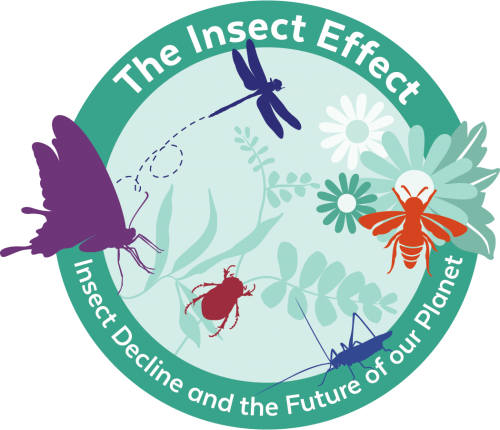Excitement About Eco Bed Bug Exterminators Dc
Excitement About Eco Bed Bug Exterminators Dc
Blog Article
The Ultimate Guide To Eco Bed Bug Exterminators Dc
Table of ContentsGetting My Eco Bed Bug Exterminators Dc To WorkRumored Buzz on Eco Bed Bug Exterminators DcUnknown Facts About Eco Bed Bug Exterminators DcThe Buzz on Eco Bed Bug Exterminators DcEco Bed Bug Exterminators Dc Fundamentals Explained
Due to the fact that chemicals are harmful, they are also possibly hazardous to humans, animals, other organisms, and the environment. Consequently, individuals who use pesticides or on a regular basis come in call with them need to understand the relative poisoning, possible wellness results, and preventative measures to minimize direct exposure to the products they make use of. Threat, or risk, of utilizing chemicals is the capacity for injury, or the level of threat involved in utilizing a chemical under an offered collection of conditions.
However, applicators can decrease or nearly eliminate direct exposure-- and hence reduce threat-- by following the label directions, utilizing personal protective garments and devices (PPE), and taking care of the pesticide properly. Even more than 95 percent of all pesticide direct exposures come from facial exposure, mostly to the hands and lower arms. By putting on a set of unlined, chemical-resistant handwear covers, this kind of exposure can be virtually removed.
The hazardous results that take place from a single exposure by any kind of route of entry are called "severe results." The 4 paths of exposure are dermal (skin), breathing (lungs), oral (mouth), and the eyes. Acute toxicity is figured out by taking a look at the dermal toxicity, breathing toxicity, and oral toxicity of guinea pig.
More About Eco Bed Bug Exterminators Dc
Intense toxicity is gauged as the amount or focus of a toxicant-- the a.i.-- required to kill half of the pets in a test population. This action is generally revealed as the LD50 (deadly dose 50) or the LC50 (dangerous focus 50). Furthermore, the LD50 and LC50 values are based on a solitary dosage and are tape-recorded in milligrams of pesticide per kilogram of body weight (mg/kg) of the guinea pig or in components per million (ppm).
The lower the LD50 or LC50 value of a pesticide item, the higher its poisoning to people and pets. Pesticides with a high LD50 are the least poisonous to humans if used according to the directions on the item tag. The persistent toxicity of a pesticide is identified by subjecting examination animals to long-term direct exposure to the energetic ingredient.
The persistent toxicity of a chemical is harder than acute poisoning to establish with lab analysis. Products are classified on the basis of their loved one severe poisoning (their LD50 or LC50 worths). Pesticides that are classified as extremely harmful (Toxicity Group I) on the basis of either oral, facial, or breathing toxicity should have the signal words threat and POISON published in red with a skull and crossbones icon prominently presented on the front panel of the plan tag.
The intense (single dose) oral LD50 for chemical products in this team ranges from a trace amount to 50 mg/kg. For instance, read review direct exposure of a few drops of a product taken orally can be deadly to a 150-pound individual. Some pesticide items have just the signal word risk, which tells you nothing concerning the intense toxicity, simply that the item can create extreme eye damages or severe skin irritation
Things about Eco Bed Bug Exterminators Dc
In this group, the severe oral LD50 arrays from 50 to 500 mg/kg. A tsp to an ounce of this material could be deadly to a 150-pound individual (bed bug exterminator). Chemical items identified as either a little toxic or fairly safe (Poisoning Groups III and IV) are required to have the signal word CAUTION on the chemical tag

All pesticide poisoning worths, including the LD50, can be located on the item's Product Safety Information Sheet (MSDS) - how to get rid of bed bugs. Pesticide tags and MSDS can be obtained from stores or makes. Additionally, the majority of items also know that can be discovered on the net. The symptoms of pesticide poisoning can vary from a moderate skin inflammation to coma and even fatality.
Due to the fact that of prospective wellness issues, pesticide customers and trainers have to identify the common indications and signs of pesticide poisoning. The impacts, or signs and symptoms, of chemical poisoning can be generally specified as either topical or systemic.
Some Of Eco Bed Bug Exterminators Dc
Dermatitis, or inflammation of the skin, is accepted as the most typically reported topical result linked with pesticide direct exposure. Some individuals tend to cough, wheeze, or sneeze when exposed to pesticide sprays.
This sign normally subsides within a couple of minutes after an individual is removed from the exposure to the toxic irritant. A reaction to a chemical product that creates somebody not just to sneeze and cough but likewise to establish severe intense respiratory system signs and symptoms is more most likely to be a true hypersensitivity or allergic reaction.
Systemic impacts are rather various from topical results. They often occur far from the initial point of contact as a result of the chemical being absorbed right into and dispersed throughout the body. Systemic impacts typically include nausea or vomiting, vomiting, fatigue, headache, and intestinal problems. In sophisticated poisoning cases, the person may experience changes in heart rate, difficulty breathing, convulsions, and coma, which could result in fatality.
Report this page